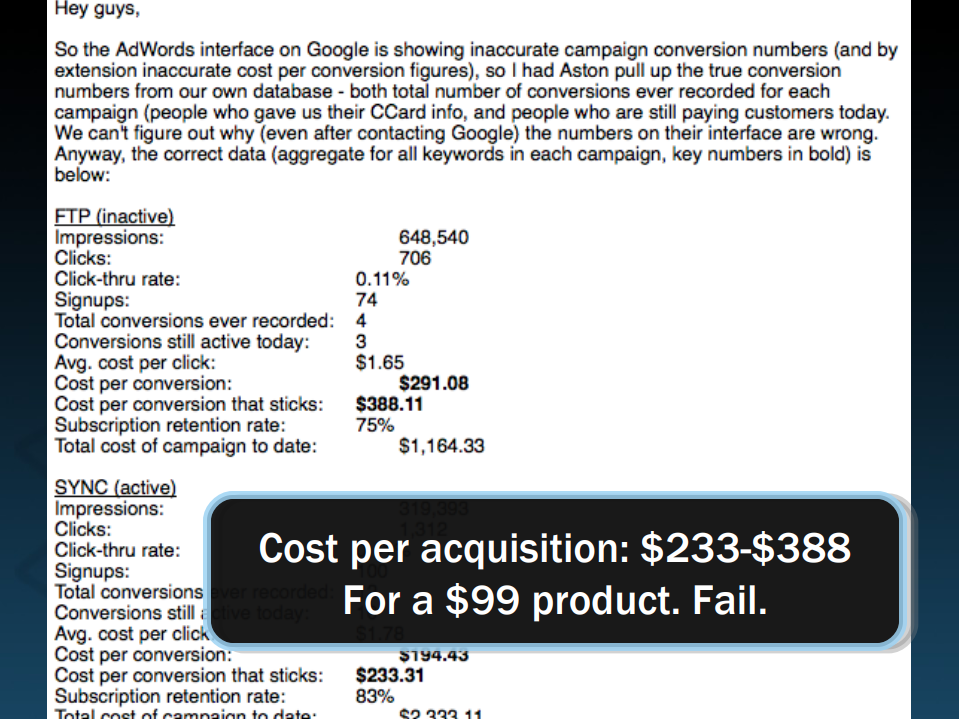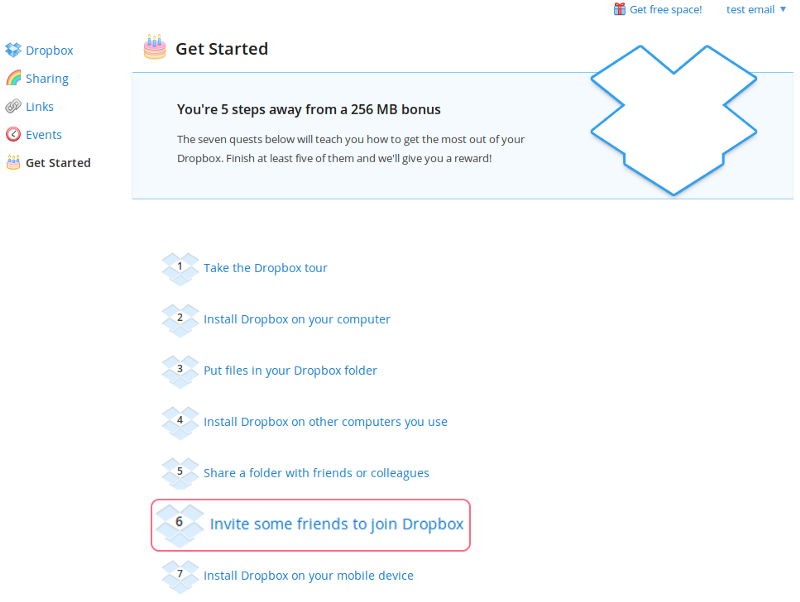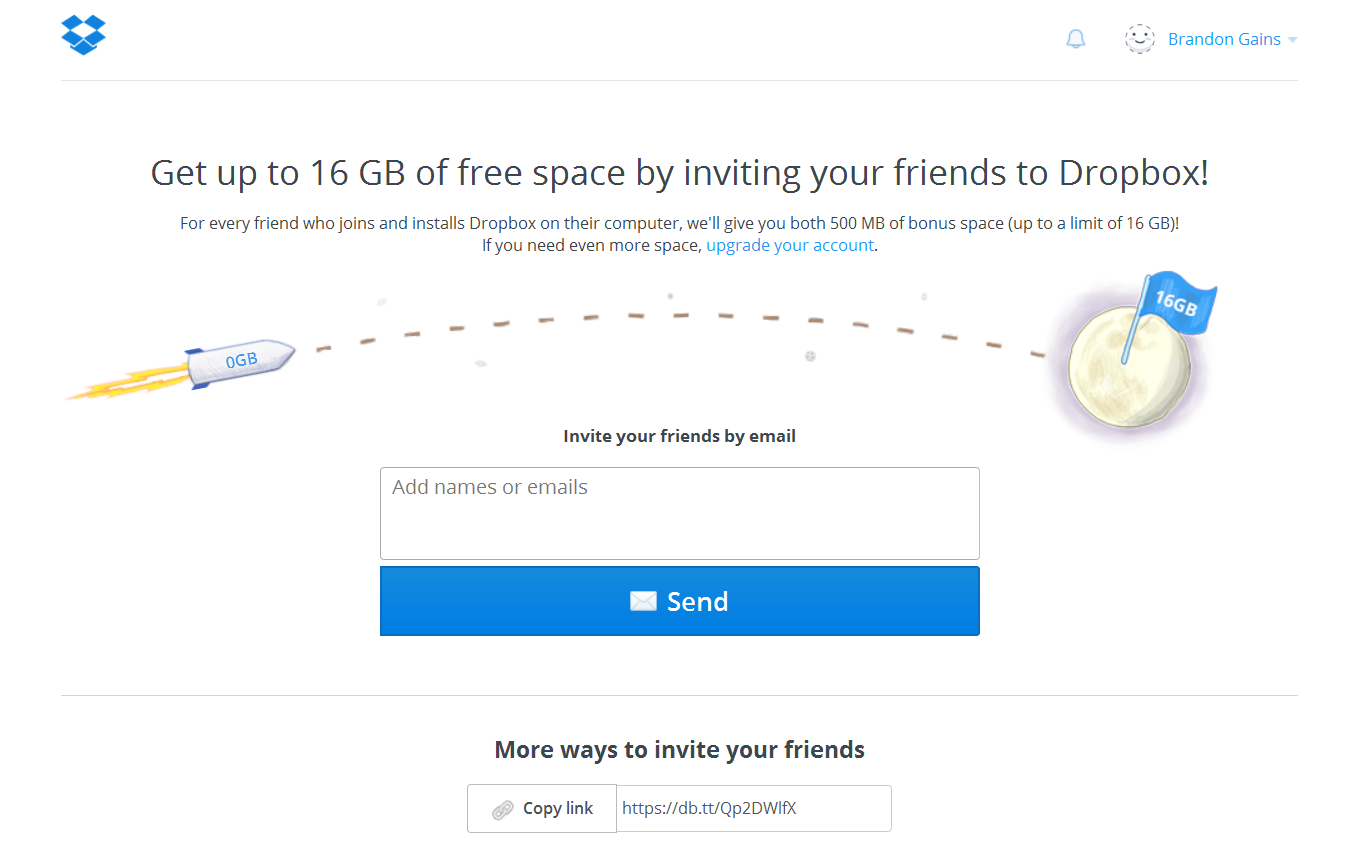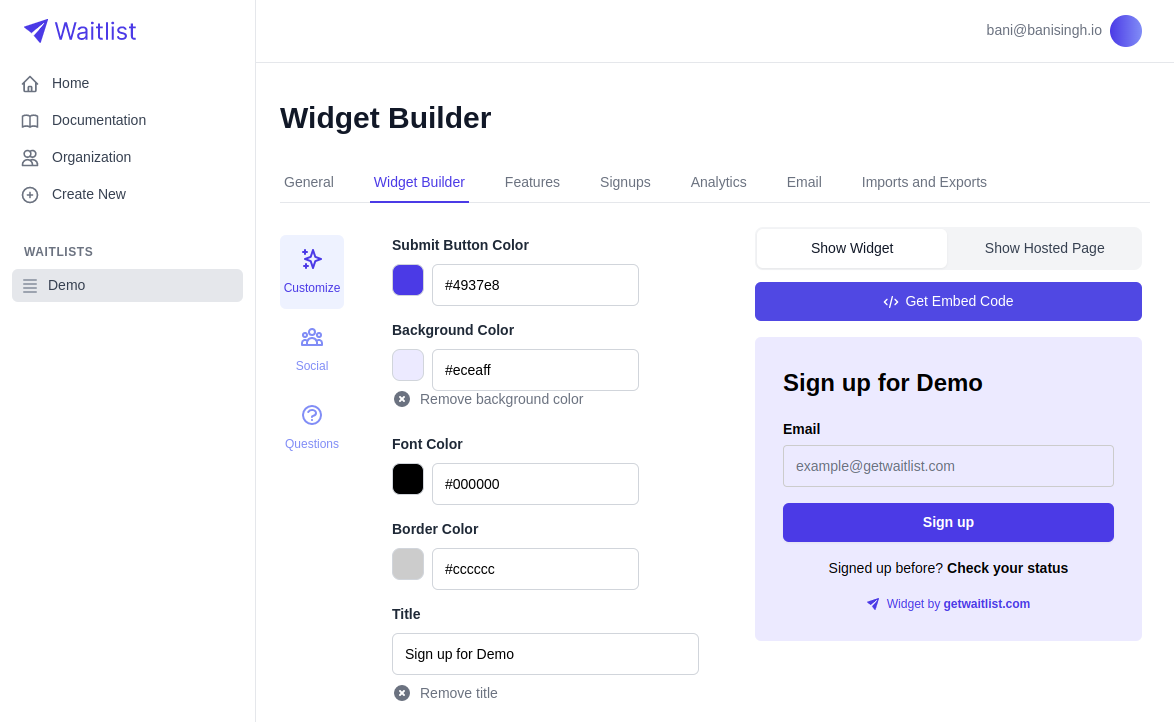As a marketer, I'm always looking for innovative
strategies that can fuel business growth. One of the all-time great success stories is Dropbox:
- September 2008: 0 Users
- April 2009: 1M Users
- September 2009: 2M Users
- November 2009: 3M Users
- October 2011: 50M Users
- November 2012: 100M Users
That was incredible growth. (Source.)
At its fastest, that was 3900% — 39x — user growth in just 15 months.
Dropbox did it with referral marketing.
In this article, we'll dive into Dropbox's highly successful referral marketing campaigns, and explore how your business could benefit from the same strategies.
Our Dropbox Source
As we did our research, we found this Slide Deck from April 2010
that Drew Houston, the co-founder and CEO of Dropbox, prepared for a "Startup Lessons Learned" event. It's very detailed and a great read, take a look if you're interested!
We will summarize the key takeaways below.
The Power of Referral Marketing
Referral marketing involves incentivizing existing customers to refer other people (friends, family, coworkers, etc.) to your business.
This strategy works because people put more trust in recommendations from people they know.
That makes referral marketing a form of Word of Mouth marketing.
Dropbox had great word-of-mouth marketing already, thanks to a good reputation in the tech community. They took advantage of this strength by getting their users to make referrals.
Why Dropbox Started Referral Marketing
Dropbox was started in 2007, and launched in September 2008. By April 2009, Dropbox crossed a million users.
They were gaining traction in the competitive cloud storage market, and seeing good organic growth.
They had over a million users by April and were seeing good organic growth, but were struggling to take it to the next level.
They first experimented with paid ads, but it was a crowded space with many competitors who had bidded up the ad keywords.
Dropbox was spending $230 to acquire a customer for a $99 product. The economics didn't work at all for Dropbox to rely on pay-per-click ads for user growth.

Then came the epiphany. People were signing up for Dropbox because a friend told them about it, and then they realized they needed it.
This was word-of-mouth marketing. Now, how can you supercharge word-of-mouth marketing? Give people rewards! Encourage them to tell their friends!
And that's exactly what Dropbox did.

Referral Incentives and Integration
Dropbox's referral program was elegantly simple yet powerful. They set a limit on the initial storage capacity users could have
and offered the opportunity to earn more space either through purchasing or referring friends. The genius of the program was in
the double-sided reward: both the referrer and the referee received an additional 500MB of free space.
To ensure maximum visibility and impact, Dropbox integrated the referral program into the user journey at the end of the onboarding process.
This strategic placement made the referral program immediately accessible to users, enticing them to participate from the very beginning.

The Success Factors
Dropbox's referral marketing program was immensely successful. By way of example, in April 2010 alone, Dropbox users sent 2.8 million invites to other people.
That's immensely valuable. The reach is equivalent to a hundreds-of-millions-of-dollars marketing campaign.
There were four key reasons why Dropbox's referral marketing strategy achieved phenomenal success:
- Simplicity: Dropbox's program was intuitive and easy to understand. Users received a unique referral link and could share it effortlessly with their friends or submit their email addresses. It was super simple.
- In the right place: a new Dropbox user couldn't miss it. It was a clear part of the onboarding flow.
- Compelling Incentives: successful referral marketing depends on offering rewards that motivate users. Dropbox's reward of additional storage space was both appealing and cost-effective. Every user wants extra space, and getting it "for free" (thanks to a referral reward) feels much better than paying for it.
- Trackable: users could directly track the referral links they had sent out, and see who had signed up from their invitations. For a referral campaign to be successful, the user has to feel in control of the process and know how they're doing! Otherwise, the user might get frustrated or doesn't know if their efforts are producing results.
All this combined to an immensely powerful viral loop for Dropbox.

Managing the User Journey and Retention
Furthermore, Dropbox implemented two important features in their referral software to ensure users remained engaged and motivated to continue referring friends.
Firstly, they sent "thank you" emails to users after successful referrals, acknowledging their efforts.
Secondly, they provided an invite status dashboard that showcased the number of referrals made and the corresponding storage space earned.
These measures gamified the referral process, and encouraged ongoing participation in the referral program.
Unlocking Growth with Referral Marketing
Dropbox's exceptional user growth of 3900% in just 15 months demonstrates the profound impact that referral marketing can have on a business.
If you're seeking a cost-effective approach to acquiring new customers while building trust and credibility, referral marketing is a strategy worth considering.
By capitalizing on the simplicity of the viral loop, offering compelling incentives, and leveraging referral software,
Dropbox blazed past all its other early competitors.
You Can Create Your Own Dropbox-Style Referral Program Today
At Waitlist, we give you the tools to build a viral referral program just like Dropbox.
Our mission is to let you unlock growth from the social networks of your users.
We offer a simple API you can use to generate referral links, and provide a dashboard to you detailed analytics on user referrals.
Our software includes powerful email features, like sending automatic thank-you notes after successful referrals, and lets you build your own custom email campaigns.
